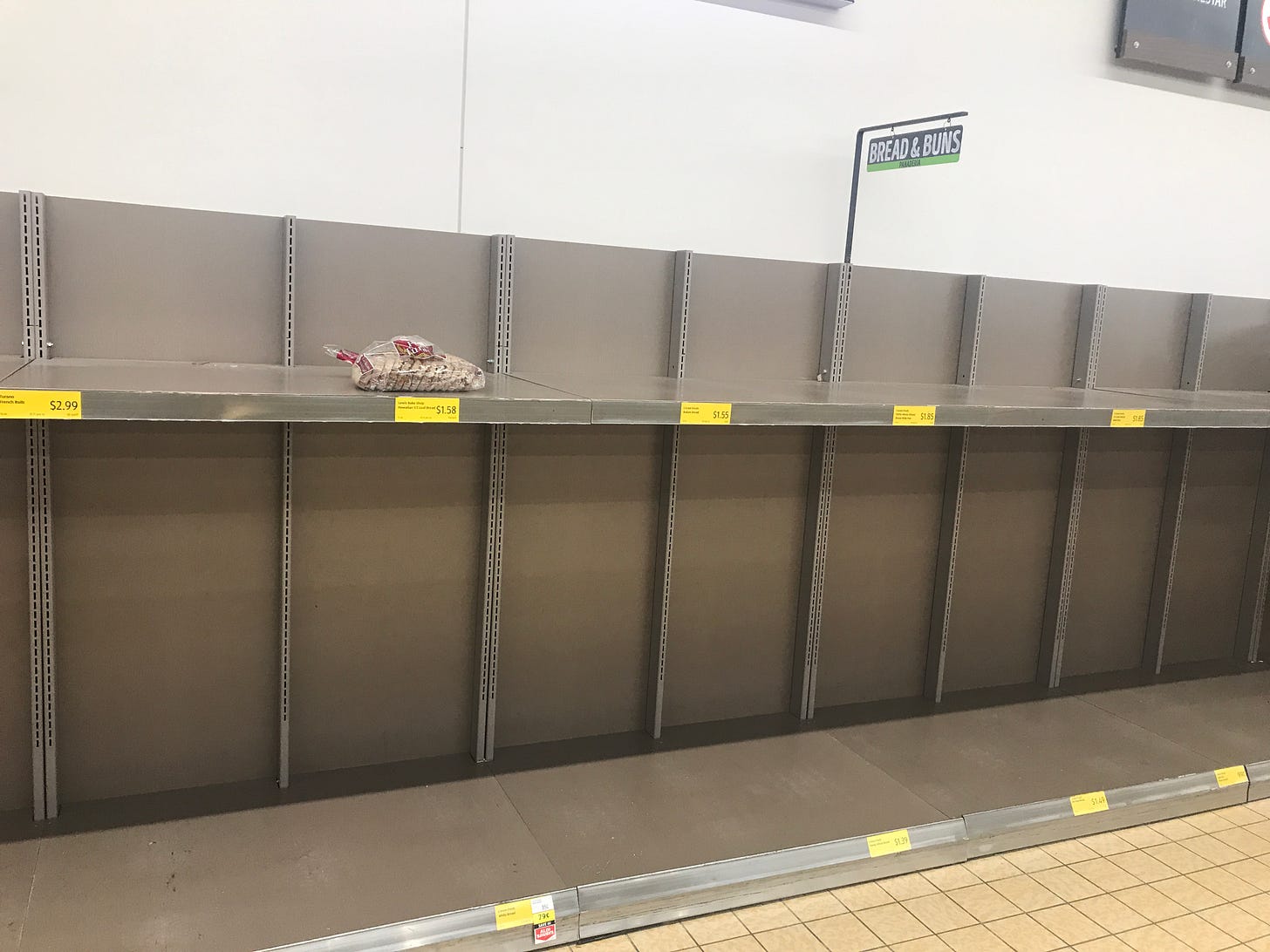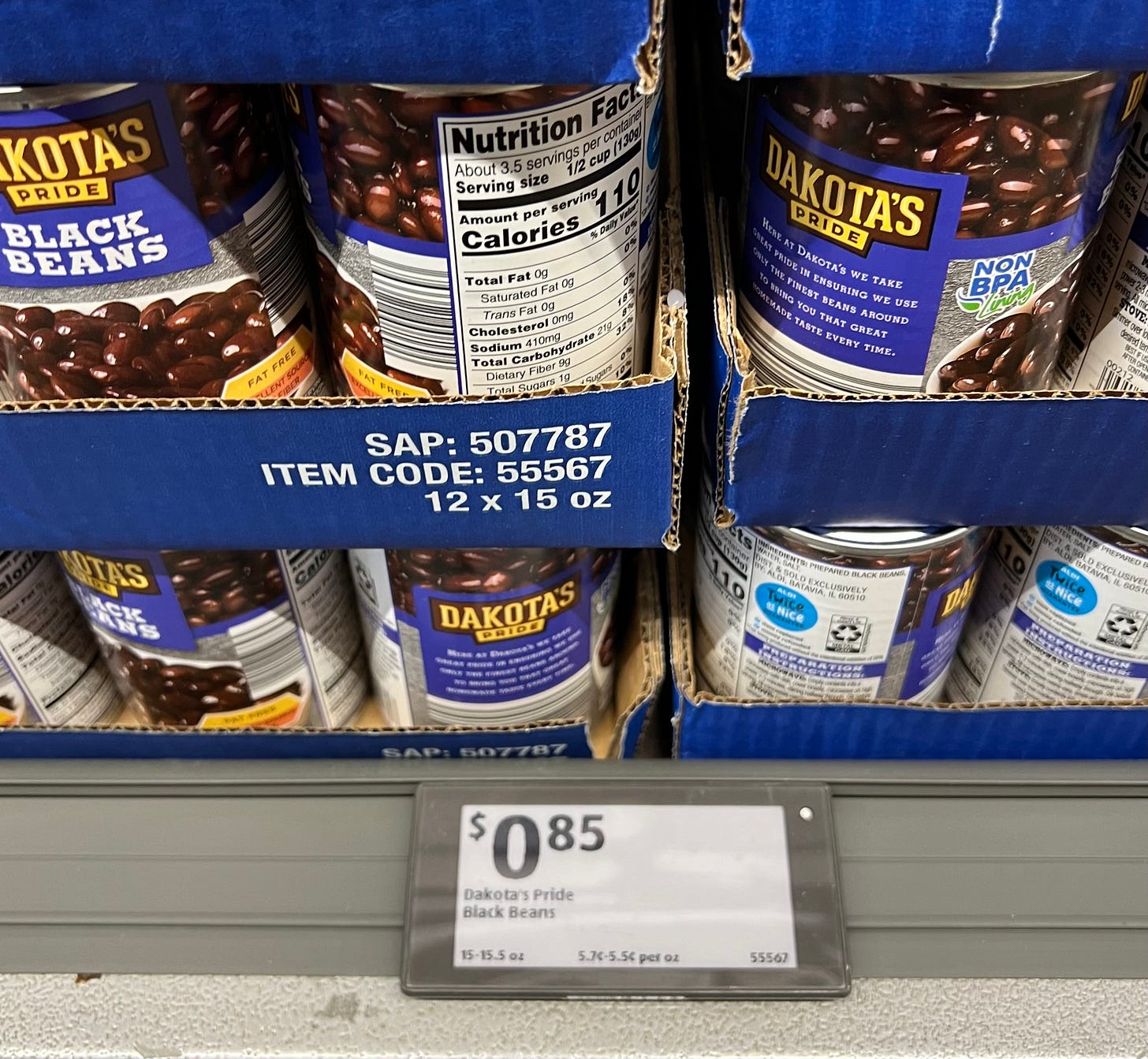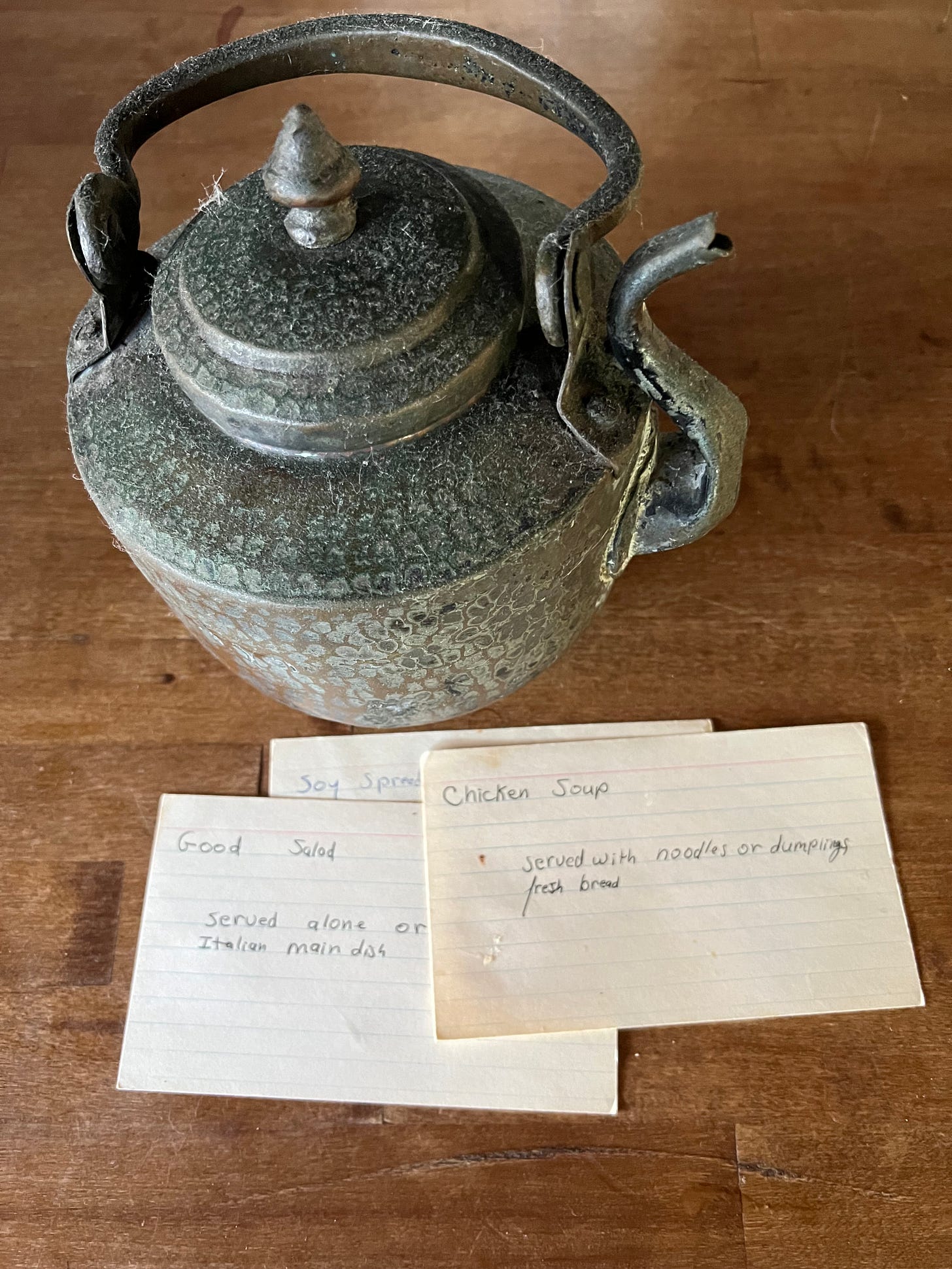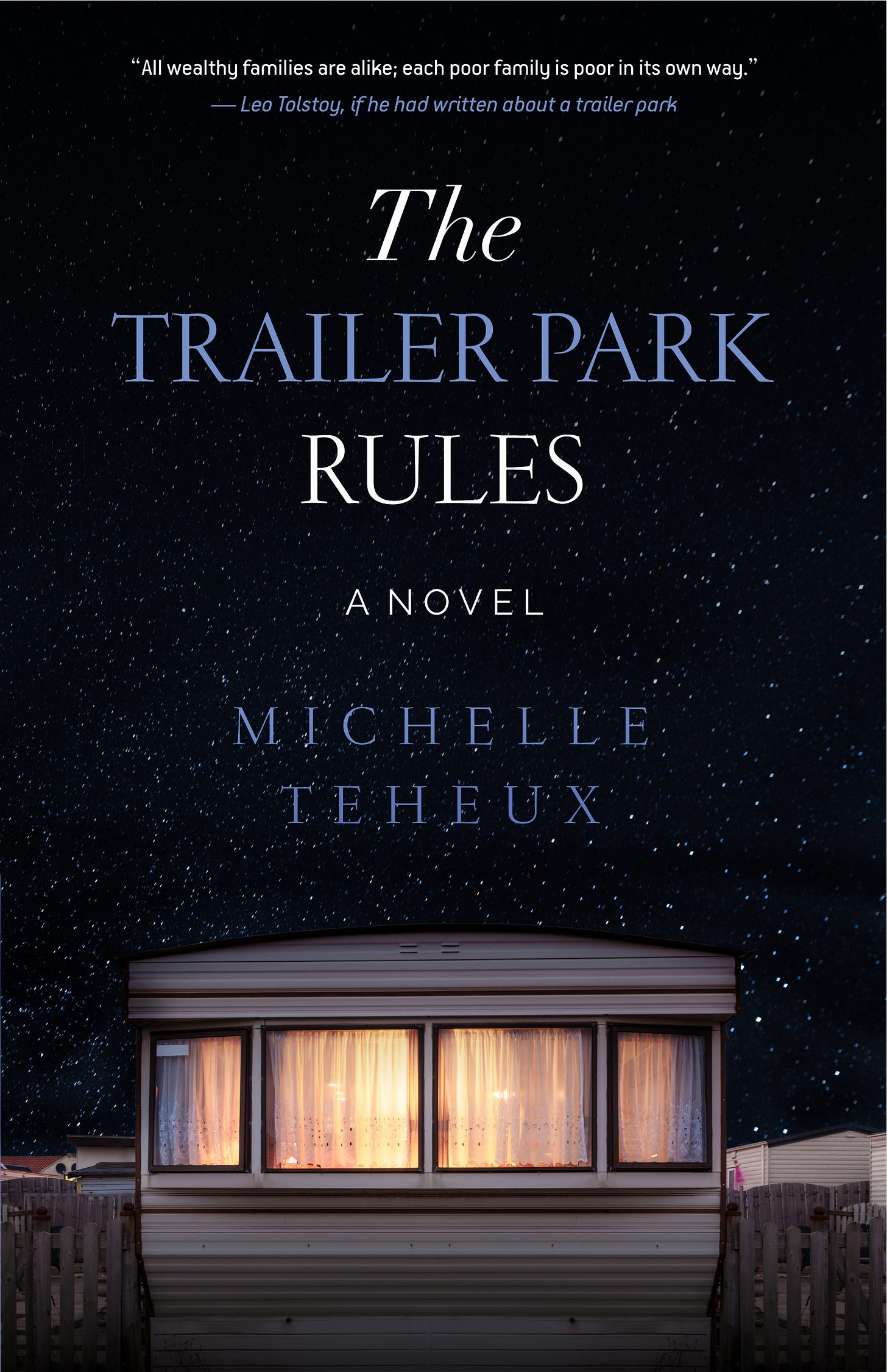How to Save Money on Groceries
Tips from someone who prepared for the pandemic and is preparing now for tariffs and worse

Right now, I feel exactly the way I felt in February 2020.
In late January and early February of that year, I started stocking up on things like black beans, brown rice, canned tomato products, pasta, lentils, brown rice and frozen vegetables in preparation for a new disease that seemed to be hitting people hard in China.
From what I had read in an inside page of the New York Times, it sounded like the trouble was going to hit the U.S. at any time, and I wanted to be ready.
But all around me, people were going about their regular shopping like nothing was wrong.
“Do you not understand what’s coming?” I wanted to ask everyone.

By the time Covid-19 had become a household name, my pantry was already nicely filled with non-perishables. No, I didn’t hoard anything. I just bought extra foods that we already ate routinely. This meant we didn’t have to enter the grocery store during the worst period of the pandemic.
Get ready now for even higher prices
Some months ago, I began keeping all my grocery receipts for reference, because I sometimes publish recipes and their cost per serving. Keeping the receipts makes it easy to confirm what price I paid for each item.
It’s astonishing how much grocery prices have risen this year, and there’s no indication they are ever going down again.
When the threatened tariffs hit, get ready to see even more dramatic increases. We import a lot of food from other countries (want fresh produce in winter, anyone?) and that means a possibly dramatic addition to your grocery bill.
You, the consumer, are the one who pays for tariffs, ultimately. Even if you have always felt comfortable spending more money on prepared foods in return for convenience, you might reach a point at which you need to adjust your shopping and start making hard choices.
If you were already a careful shopper, you might need to make even harder choices.
Maybe you’ll switch from meat to canned beans. Or maybe you’ll switch from canned beans to dried beans. Perhaps you’ll ask your grandma for her thrifty soup recipes.
Stocking up now can help somewhat, but even a well-stocked pantry like mine won’t solve this problem for long.
What do you know about grocery shopping?
We all have different grocery shopping styles, and it turns out knowledge I thought was universal might not be.
Last week, as I searched through the hummus at Aldi, searching for the plain old classic version I wanted, I realized another woman was doing the same thing. Together, we discovered no classic hummus was available in the regular tub. However, it was available in individual-serving sized containers.
The other woman asked me my opinion, which I am certain she soon grew to regret. I launched into an explanation of the differences between the options, explained to her that hummus is very easy to make (I used to make it from scratch using dried garbanzos) but that if we wanted to make it ourselves we’d have to go elsewhere to buy tahini because our Aldi doesn’t carry it.
I confirmed that the individually portioned classic-style hummus would taste the same as that in the tub, but said I didn’t want to buy it that way because the unit price is higher and it has excess packaging.
I ultimately chose the variety topped with pine nuts. I pointed to the ingredient list and showed her that except for the topping, the ingredients were the same as in the classic hummus.
Unit pricing — usually clearly marked on the shelf along with the total price — was something she didn’t know about. Now she does!

I essentially presented an entire shopping lesson right there in the aisle. I am not entirely positive whether she saw this as helpful or annoying, but she definitely knows more about unit shopping and label reading now. (She asked a lot of questions, so maybe I wasn’t entirely annoying.)
She was a well-dressed, well-spoken and presumably well-educated woman and didn’t know a lot of things about grocery shopping I assumed were common knowledge. So maybe more people than I think could benefit from some basic grocery-shopping information.
And by the way, I’m going to pick up some tahini the next time I hit a regular supermarket (or a specialty food store, but there are none near me) so I can go back to making my own hummus from scratch again.
My old method might save you money and aggravation
I still have a few of the index cards I wrote when my children were small and my budget was smaller that I used for my homemade meal planning system. Some version of this might be useful for those of you who want to establish thriftier meal habits. (There’s probably an app out there that would do this for you now.)

I wrote the names of our favorite dinners on index cards. On the back of each card, I noted the ingredients I’d need to make the dish, along with any side dish that generally accompanied it.
Before I went to the grocery store, I’d pick up my stack of index cards and deal them out: “Vegetable soup — yes or no?” I’d ask my family. “Spaghetti — yes or no?” Once we had agreed on seven different dinners, all I had to do was flip over the cards and make my shopping list.
Absolutely, you need a list
If you want to shop very thriftily, make a list. Mine is most often in my head nowadays, because I’ve been doing this for a long time. But even now, if I’m making something new, I put the ingredients on the Notes app on my phone so I don’t forget whatever obscure ingredient I need for the new recipe.
Many (many!) years ago, Aldi published a weekly price list in the form of a tabloid newspaper. That was great, because I could sit down and figure up exactly what my grocery cost that week was going to be. I’d get the cash from the small teapot where I placed our weekly grocery allotment and know whether I had enough money to buy everything.
If I didn’t have enough money, I’d have to take something off the shopping list. I’d re-work my cooking plans in some way, because there was zero wiggle room in my budget. Also, for those of you who are way younger than me, Aldi used to accept only cash.
My weekly shopping budget 30 years ago was $25 per week for two adults and two very young children who ate almost nothing. I bought flour 100 pounds at a time from a milling company so I could make bread, pasta, tortillas and even, occasionally, crackers from scratch. We ate a lot of homemade soup. I never bought canned beans back then — only dried.
But always be ready to scrap your list
If I see a good sale, I’ll rearrange all my plans to take advantage of it. Once in a while it’s possible to buy bananas that are on the verge of being too ripe for significantly less than usual. When I run into this situation, I make sure I will have a couple of extra hours available, and if so, I buy enough bananas to bake and freeze multiple loaves of banana bread.
Another time, after-Easter hams were down to 50 cents per pound. I bought the largest one they had, cut most of it into cubes and froze the cubes in plastic bags. I rendered down all the fat into lard and used it in cooking when I could. (Don’t be afraid to render your own lard.) My husband is a vegetarian, so I use lard only when not cooking for him.
I used the frozen cubes of ham to add to just my portion when I made things like potato soup. His soup was vegetarian; mine was garnished with ham cubes. We were both happy. Little cubes of ham are also great added to a cheese omelet or to a pot of beans.
That ham lasted me a long, long time. It’s nearly that time of year again, and I’ll check the prices every week just in case such a deal pops up again.
Menus are meant to be flexible
If I’m planning spinach salad, which is a favorite around here, I don’t want to wait because spinach goes bad fairly quickly. (Quick recipe: Chop your spinach. Add several green onions or use part of a red onion. Finely chopped cauliflower and/or broccoli is also very welcome here. Add dried cranberries and sliced almonds to taste. Dress with sweetened mayo. I hate to add sugar to salads or anything else, but just a tablespoon or so really does make this salad. Add chopped cooked chicken or faux vegetarian chicken if you want to use it as a main dish.)
Don’t fill your cart with too many highly perishable things like spinach or fresh fish unless you’re sure you’ll use them in time. Plan to eat those within a couple of days of purchase.
Turn to less-perishable ingredients for later in the week. Potatoes, carrots, cabbage, onions, celery and such will patiently wait their turn. That gives you flexibility in case you just don’t feel like making a certain dish some evening.
Lettuce salad is usually horrible the next day. But a lot of chopped veggies keep well. While you’re chopping onions for one meal, go ahead and prep enough for the next several days.
Plan some two-fers
I like to deliberately make leftovers. It’s hardly any more trouble to make a huge pot of vegetable soup or chili than a smaller quantity. Most soups are better the next day anyway, and man, do I ever like the knowledge that all I need to do the next day is reheat the soup.
I always make big pots of spicy black beans and brown rice, too.
Lots of other foods make good leftovers. Prepare extra.
Beware of pasta and rice!
Both are dirt cheap and taste good, but when you’re trying to save money, it can be tempting to over-rely on them. Make them if you like them, but don’t go overboard.
Don’t buy any food just because it’s cheap. Some people will buy things like the ultra-cheap ramen noodle packages or the kind of hot dogs made of the most questionable meat scraps.
I do understand the temptation to purchase these foods to avoid going hungry because I’ve been there. But better choices are things like oatmeal (the kind in the canister, not the sugary stuff in the envelopes!), peanut butter, beans, potatoes and so forth. Your food is what nourishes you, so try to purchase things that don’t just fill your belly but also provide real nutrition.
Meal planning, grocery shopping and cooking are real skills we need to value more. If you weren’t raised this way, I encourage you to start learning now. I can’t predict anything about the future except for this: You will never regret learning how to feed yourself well on a budget.
About Michelle Teheux
I’m a writer in central Illinois. If you like my work, subscribe to me here and on Medium. I also have a new Substack aimed at authors who want to self-publish books, called The Indie Author. My most recent book is Strapped: Fighting for the soul of the American working class. My most recent novel is The Trailer Park Rules. If you prefer to give a one-time tip, I accept Ko-fi.
All wealthy families are alike; each poor family is poor in its own way.
— Leo Tolstoy, if he had written about a trailer park
For residents of the Loire Mobile Home Park, surviving means understanding which rules to follow and which to break. Each has landed in the trailer park for wildly different reasons.
Jonesy is a failed journalist with one dream left. Angel is the kind of irresponsible single mother society just shakes its head about, and her daughter Maya is the kid everybody overlooks. Jimmy and Janiece Jackson wanted to be the first in their families to achieve the American dream, but all the positive attitude in the world can’t solve their predicament. Darren is a disabled man trying to enjoy his life despite a dark past. Kaitlin is a former stripper with a sugar daddy, while Shirley is an older lady who has come down in the world and lives in denial. Nancy runs the park like a tyrant but finds out when a larger corporation takes over that she’s not different from the residents.
When the new owners jack up the lot rent, the lives of everyone in the park shift dramatically and in some cases tragically.
Welcome to the Loire Mobile Home Park! Please observe all rules.












I’ve ramped up my gardening so that I always have some fresh produce to harvest (I live in Southern California, we have a year-round growing season). Cruciferous veggies, peas, fava beans in the winter and spring; tomatoes, string beans, squash, etc. in the summer and fall, herbs everywhere. Meat, I only buy what’s on sale. My standalone freezer is stuffed to the gills!
If you watch for specials, salad kits are surprisingly economical and cut down on wasted produce. Don’t over-rely on them, but it’s a great option and I’ve discovered some really good combinations that I can then adapt and make from scratch. Taylor Farms has a “sweet kale” salad that is really good—chopped kale and cabbages with almonds and dried cranberries and a poppy seed dressing that is strangely addictive.
We learned a lot about the value of smaller food systems during the pandemic—locally sourced fruit and vegetables are more expensive than the grocery store, but if you factor in tariffs it will be comparable this summer and fall. If you live in a rural area, keep an eye on the farm and garden/local Facebook pages. We scored a deal when a local person sent her pigs to be butchered. We went in with a friend and purchased a whole pig. It was cut up according to our specs, vacuum sealed and is now in our freezer. I’ve also purchased beef and chicken this way. It’s better meat, more humanely raised, and it helps out local families who are usually raising animals as a side hustle.